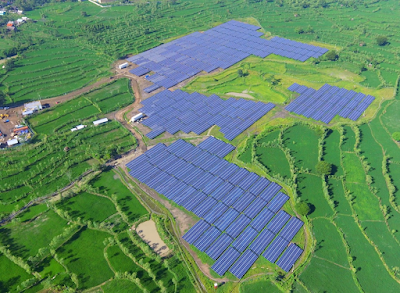“Sustainable Energy” class is prepared as part of the “Learn & Act” educational program of the Sunhak Peace Prize designed to introduce diverse approaches to global peace issues. Please feel free to use the following material to teach about this topic in various learning environments. We aim to educate young future leaders and provide a learning platform where they can learn and act on various issues shaping our society.
Education contents produced are based on statistical data from various organizations, such as the UN and UNESCO. Teachers can conduct a 60-minute class for their middle school and older students using the teacher’s guide and student worksheets provided on our website.
The following is an introduction to the topic “Sustainable Energy.”
Sustainable Energy
The ‘Sustainable Energy’ class deals with the energy that is always with us in our daily life. We use energy every moment to make it possible to study, grow crops, store food, cook, and heat.
The energy that makes human life more convenient can cause power outages if used excessively. So, what can we do to prevent problems like this?
The ‘Sustainable Energy’ lesson is structured so that anyone could easily understand and learn more about the types of energy, its pros and cons, global energy status, and why renewable energy is vital. Let’s find out together!
Life with energy, the other side
Most of the energy we use is made from fossil fuels. The enormous greenhouse gases produced by burning fossil fuels also cause global warming. In addition, although the worldwide village is using a wide range of energy, there is an energy gap that is so large that 1 in 7 people around the world is not able to use enough electric power.
What is fossil energy?
Fossil energy uses coal, oil, natural gas, etc., and accounts for the most significant proportion of energy currently used by humankind. Fossil fuels are being consumed by humanity at a very rapid rate, and reserves are dwindling. In addition, carbon dioxide is released into the atmosphere from the use of fossil fuels, causing environmental degradation through greenhouse effect.
What is renewable energy?
Renewable energy refers to the energy that can be supplied indefinitely even if it is continuously consumed without causing any pollution in the process of use. Due to its low energy density, renewable energy has the disadvantage of low efficiency, but it is attracting attention as a new resource to replace fossil energy because it is clean and there is no fear of exhaustion. Renewable energy includes hydropower, wind power, solar power, and biomass.
Global Energy Status
According to UN data, 73% of global greenhouse gases are caused by fossil energy. It is said that the energy produced in this way is wasted in developed countries and is not appropriately supplied in developing countries.
About 800 million people worldwide live without electricity, and 2.8 billion people use harmful energy. You can learn more about the case of energy inequality and what efforts are needed to solve it through our educational materials!
The most important thing for sustainable energy use
First, it is necessary to switch to renewable energy that can be self-sufficient! We also need to address environmental and resource depletion issues. This is because fossil energy raises global temperature, destroys ecological order, and threatens humanity’s very survival. In addition, it is necessary to develop related technologies and spread them through international cooperation to create renewable energy.
According to the United Nations, about 4.3 million people die each year from low-quality energy. The main reason for this is low-quality, combustible fuel that emits toxic gases indoors. About 60% of these deaths are women, including many young girls. We see the importance of using high-quality energy, such as sustainable energy, rather than any other.
In this way, we can see that the use of sustainable energy needs to be further activated in order to protect our health and solve the problem of resource depletion.
It is said that by increasing the proportion of renewable energy, about 11.5 million jobs can be created. I hope this class will help you to think about the different efforts we can make to increase the use of renewable energy!
You can find more information on our website, including a teacher’s guide and student worksheets. We hope that it will be of help to teachers who wish to educate through this initiative!
Please visit our Sunhak Peace Prize website to check out more educational materials on peace related topics.
http://sunhakpeaceprize.org/en/learn/learn_act.php























